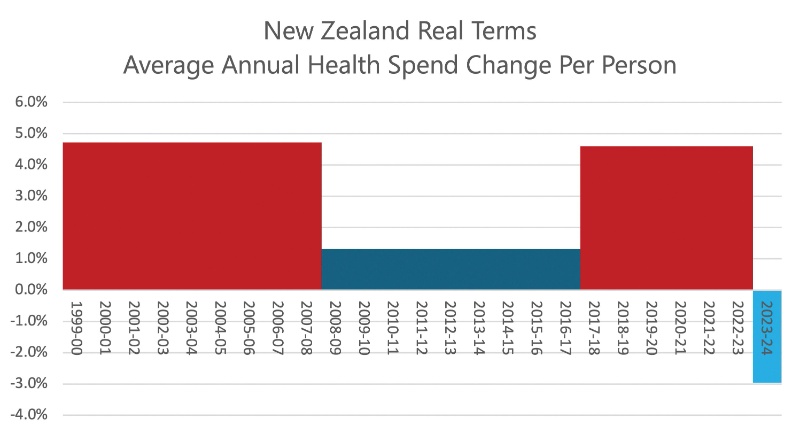NZ Not-for-Profit Survey highlights cause for concern
NZ Not-for-Profit Survey highlights cause for concern in light of planned minimum wage increases
Auckland, New Zealand; Thursday 9th August, 2018
Findings from Strategic Pay’s recently released annual 2018 Not-for-Profit (NFP) Remuneration Survey have offered valuable insights into the potential financial impact of recent settlements and planned minimum wage increases for New Zealand’s NFP sector.
In the wake of the 2017 Care Workers and upcoming mental health workers settlements, the latest NFP survey figures show unprecedented growth in median remuneration levels for lower-level workers across these parts of the sector, in some cases up by as much as 20 percent from last year.
This remarkable boost comes in sharp contrast to median increases at a more senior level, which measured as little as 0.6 percent – significantly below the nation-wide median increase of 2.2 percent.
Strategic Pay Chief Executive Officer, John McGill, says this vast difference is likely a result of the pay compression created by industry settlements, bringing individuals closer together on the remuneration ladder.
“The settlements cover the total increase for specified groups, but what they typically fail to take into account is the necessary increases that must be given to closely related roles, like direct managers. Our estimations are that for every dollar spent shifting one group to a new pay level, seven further dollars will need to be spent addressing the relative impact on other groups,” McGill explains.
“That has to be covered at the expense of the NFPs themselves, which are already operating on exceptionally tight budgets - and what we’ve seen in this year’s report is evidence of affected organisations using available funds to correct that pay compression as far as possible, leaving little or nothing for increases further up the scale.
“As the planned minimum wage increases take effect, we’ll no doubt start to see the same thing happening throughout the NFP sector, and more widely as the legally enforceable increases are enacted. With Government already saying “there’s no more money”, NFPs could be left scrambling to find the additional funds they need or implement other strategies to mitigate the short-fall – such as reducing the number of supervisory roles, reducing hours of work, or simply having to accept greater levels of pay compression across the board,” concludes McGill.
Max Robins, CEO of residential aged-care provider, CHT Healthcare Trust, says “The pay equity legislation has undoubtedly had some unanticipated consequences – particularly thanks to its recognition of a far broader range of qualifications than those envisaged by employers during negotiations. We’re now seeing twice the number of caregivers on the highest level of the caregiver pay scale as of June 2018, compared with 1 July last year.
“As well as imposing additional cost pressures on providers the pay equity legislation has compressed margins between caregivers and other staff. The rejected offer to public health sector nurses will significantly increase the margins between nurses working in aged care and nurses in DHB, adding more cost pressure to the sector. The broader labour market policy settings and wage growth is placing considerable cost pressure on aged care providers, where revenue is directly linked to the price paid by DHBs for services,” Robins concludes.
More broadly, Strategic Pay’s New Zealand Benchmark Report, also released last month, indicates that although salary increases have remained relatively stable across the board in the last 12 months, at 2.2 percent, the wider market sees these recent settlements as having set an important precedent for greater increases.
Coupled with tough conversations around teacher and nurse wage levels and planned minimum wage increases, this has led to raised expectations across the labour market.
With New Zealand’s Private and Public sectors forecasting 2.6 percent and 2.1 percent median increases, respectively, this means employers are likely to be dealing with greater budgetary pressures, which many will not have accounted for in the current financial year.
This is likely to be particularly true for the healthcare sector, which saw an average increase of just 0.6 percent in the last 12 months, and potentially less so for the trades and labouring sector, which saw an average salary increase of 3.4 percent.
Full reports can be purchased from www.strategicpay.co.nz.
ENDS


 Gordon Campbell: On The Americanising Of NZ’s Public Health System
Gordon Campbell: On The Americanising Of NZ’s Public Health System New Zealand Deerstalkers Association: NZDA Urges Hunters To Prioritise Safety This Roar Season
New Zealand Deerstalkers Association: NZDA Urges Hunters To Prioritise Safety This Roar Season PSA: 1000 Days Since Landmark Pay Equity Deal Expired - Workers Losing $145 A Week
PSA: 1000 Days Since Landmark Pay Equity Deal Expired - Workers Losing $145 A Week Grace Tinetali-Fiavaai, RNZ: Widow Of Fa'anānā Efeso Collins Seeks Inquiry Into His Death - 'Unanswered Questions'
Grace Tinetali-Fiavaai, RNZ: Widow Of Fa'anānā Efeso Collins Seeks Inquiry Into His Death - 'Unanswered Questions' Te Pāti Māori: Te Pāti Māori Call For Mandatory Police Body Cameras
Te Pāti Māori: Te Pāti Māori Call For Mandatory Police Body Cameras NZ First Party: NZ First Introduces the “Conscience Acts Referendums Bill”
NZ First Party: NZ First Introduces the “Conscience Acts Referendums Bill” NZ Government: Unlocking Data To Increase Competition And Choice
NZ Government: Unlocking Data To Increase Competition And Choice


